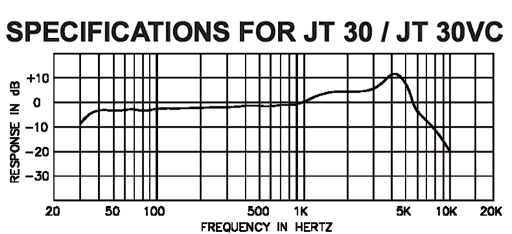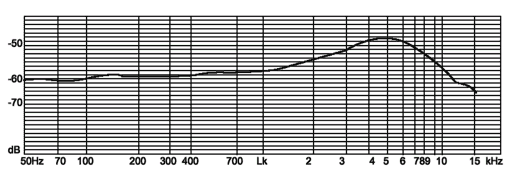Reissue 1490 Blues Blaster – First Impressions
I received my reissue 1490 Blues Blaster from www.MusiciansFriend.com today and I took it down in the cellar to try it out on a few tube amps.First, the microphone shell is made by Omnitronics, the great-grandchild of Astatic in Conneaut, Ohio, using the same moulds that they’ve been using to make the JT-30, the Blues Blaster, and the HM-50 for many years. The casting quality doesn’t measure up to the crisp clean casts made in the 1950’s, but is just fine for our purposes. The zinc alloy body has the same weight and feel that harp players have enjoyed since Little Walter first picked up a JT-30 and played through it. The body has a translucent blue paint over a silvery base which I have always liked in the Blues Blaster. The connector is the same glued-in XLR connection with the funny wiring that requires a special cord. (My Blaster came with a free cord.) The XLR connector is a frequent source of problems. It loosens up over time and the mic looses its ground connection causing intermittent loss of sound. I was hoping that someone would rethink the connector.
The grill is the same chrome plated grill reminding one of a 1948 dodge. The casting is sloppy and there are noticeable “tailings” on the grill. There is a black metal screen under the grill and behind that is a pad of what looks like fiberglass insulation. The screws holding the grill on are black Phillips head screws which I always replace with nickel plated quarter round mechanics slot type screws – they are cheap and authentic.
The volume control is located in what formerly was the cable connector hole, as the XLR connector uses the hole formerly used for the stand. The volume pot is stiff and difficult to turn – a good thing, as you don’t want to hit the volume control accidentally while you are playing.
On the outside the Blues Blaster has not changed at all.
When you open it up, the changes become obvious. The crystal element is about ½ the size of the original MC-151 element that came standard on the original Blues Blasters. This translates to ¼ of the surface area receiving sound. The element is cheesy and has “Made in Japan” stamped on the back. In fact it looks exactly like the www.mouser.com element manufactured by Kobitone
Another huge change is the presence of a “magic capacitor” in the circuit ala Rod Piazza (see circuit). This is supposed to roll off highs when turning down the volume pot. Normally I don’t play harp except near full volume. I use the pot to cut back when I start to feedback. I turn the harp down about ¼ turn for playing rhythm chugs behind a singer or guitar player and then crank it back up for solos. I have never had too much problem with tone changes introduced by the volume pot. If you played with the pot turned down to ¼ volume, you might need this.
My mic came with a stray wire that looked like it had broken off something. It was one of two wires coming from one leg of the element. One wire was attached to pin 1 of the XLR. I soldered the loose one to ground, but there was already a path to ground so I am not sure what it was for. The mic worked with or without the loose wire attached.
How does the mic sound?
At equal volume settings, an original Blues Blaster and the resissue Blues Blaster have significant differences in sound. First, I hooked up an original mic to my 1957 Premier Model 50. This is my favorite harp amp. It has a cool sound at low volumes so I can turn it up to 4 without feedback in the small basement room where Erica and the cats allow me to play harp. I played a few riffs to accustom my ears to the basic blues harp sound of a crystal element played through a simple class “A” tube amp. I adjusted the volume on the amp to just below feedback level with the pot on the mic set at 100%.
I then plugged the reissue mic in and was rewarded with a roomful of screaming feedback. The reissue mic, under the same conditions and amp settings, had a much higher level of feedback.
I turned down the volume on the amp to the point where the feedback stopped. I had to turn it from about 4 to 3-1/2 – not a real big difference. I then played through the original and the reissue alternately listening to differences in sound.
“Your mileage may vary!” You have to know that I worked in a factory during college and got caught in an explosion of hydrogen gas, which was very, very loud. My hearing has not been as good since and I have trouble with higher frequencies. (You might say this is an advantage to a blues harp player.) That being said, I noticed that the reissue mic was significantly brighter in tone. It had better response to higher notes and the low notes did not have the booming harp-organ quality that I’ve grown to expect from a JT-30.
Until I get a chance to record someone playing through the two mics, the graphs below might help explain the differences.

Kobitone crystal element

The smaller reissue element is obviously more responsive to higher frequencies. The MC-151 drops off abruptly after 4k and stops altogether before 10k where the Kobitone element has a less steep drop off and includes some of the higher frequencies (which I cannot hear). The smaller element size limits somewhat the lower frequencies while on the MC-151, the larger size gathers more low frequencies and the stiff zinc allow base kills higher frequencies.
Higher frequency response equals more feedback. You can cut back on this by putting a 100k resistor in series with the element or using a piece of cardboard to muffle the sound before it hits the element – both solutions rob you of tone and can make you sound “muddy”. I have experimented with attaching a large “fender washer” to the back of cheaper elements with epoxy hoping that the weight of the washer will deaden the highs a little without hurting the lows. The difference is very subtle, but it helps.
Is the higher frequency response a bad thing? Absolutely not! There are players who will welcome the addition of higher tones. The reissue mic will have a brighter, more natural sound so that Jazz, Country, C&W, and folk players will find the mic more responsive and not as dark sounding as the original. The mic will sound more like a vocal mic with the advantage of having a better frequency response for certain styles of playing. Even Blues players will enjoy being able to get a very dirty sound of an overdriven tube amp, even though the higher frequencies will make feedback a problem.
If you want to keep the deeper Big Walter sound, you might have to turn the treble down and the bass up on the amp at the cost of loosing a little punch or definition in the notes.
For us purists and tone bigots, we’ll have to find another source of elements.
